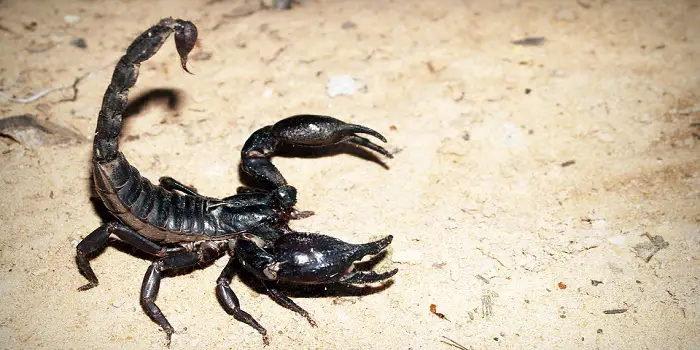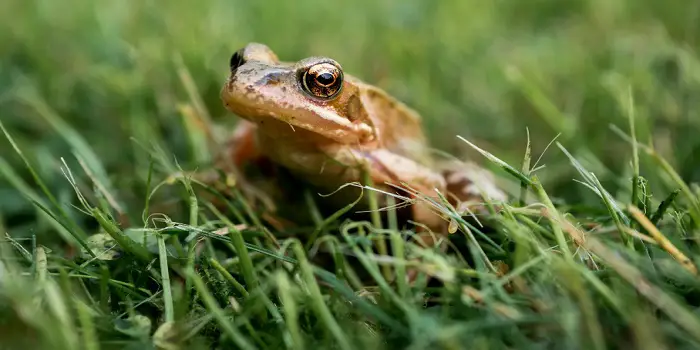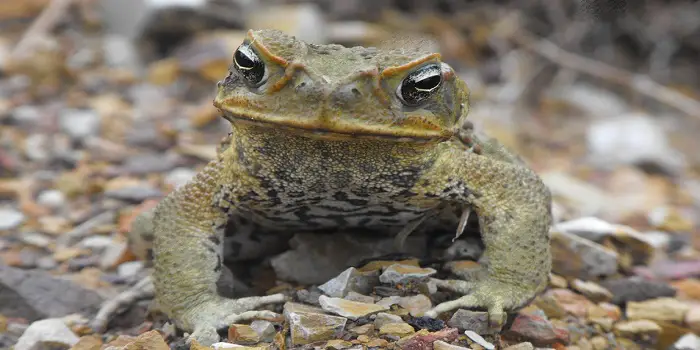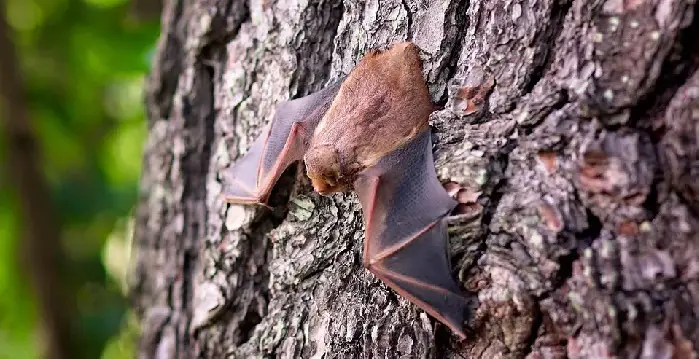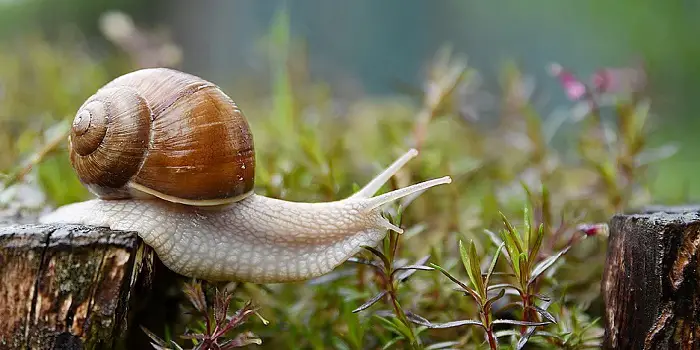
The presence of slugs and snails in the house can drive you mad when you see their trails across carpets, floors, and furnishings, even on the walls.
And if, by mistake, you step on one of them on your way to your bathroom, the slime is very gluey.
But, take a breath as the good news is you can prevent them from entering your home from now.
Here I am discussing some of the steps you can take to get rid of slugs and snails in your home.
Before we get into them, let’s check out why these creatures get attracted to your home in the first place.
What Attracts Snails in the House?
Usually, old houses attract slugs and snails because of several cracks and crevices and the dark, moist atmosphere that appeals to them.
Plus, slugs can smell from a distance and thus get attracted to kitchen food and pet food, including the fish in your aquarium.
If you have left your furry friend’s food on the porch on a moist night and slugs are nearby, then they will come running inside!
You may also have so many snails in your backyard or garden.
They are usually attracted to the compost, weeds, piles of dead plants, etc., and can come inside if they are given an opportunity.
The usual places where the snails and slugs find entry are areas below the doors, holes drilled for gas or water supply, furnace cut-outs, ducts, joint walls, and holes for electric wires.
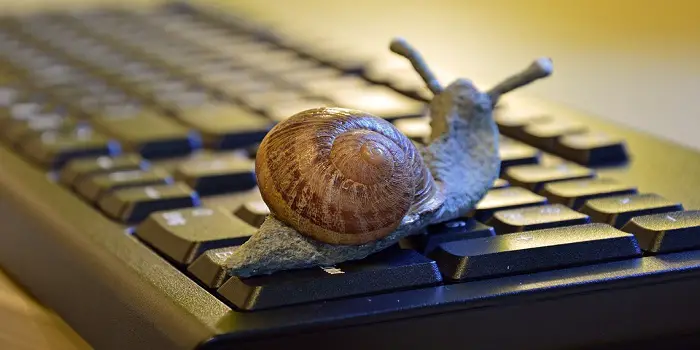
Different Ways to Deter Them Naturally
Getting rid of slugs and snails in the house is not a problem once you know how they have entered.
One good thing is that you can control all the gastropods similarly through organic, natural, and unnatural methods.
Below is the article where we deal with options to get rid of slugs and snails in your house, garden, and water bodies or near them.
1- Baits
In general, there are two ways to use baits for snails.
These are liquid and dry powdered baits.
a) Liquid bait:
Beer and iron phosphate are the most common baits you can use for snails and slugs in the home and garden.
Liquid iron phosphates allure the mollusks and kill them fast as compared to beer.
You can also use grape juice or a mix of honey and yeast.
- If you want to go for it, just fill a bowl with it and keep it where gastropods come.
- Bring the bowl to ground level so that they can easily crawl in.
- Once the pests are out of their hiding locations, they will be allured by the bait, and they will crawl in and drown.
Once you are done for the day, you can dispose of the dead mollusks.
b) Powdered bait:
By using dry baits in the powdered form, you control them with methiocarb and metaldehyde.
Make sure you sprinkle them in the right place to get rid of them.
But remember, they can be harmful to other domestic animals as well as humans, so you should be cautious while using them.
2- Traps
If you don’t want to use poison and kill the mollusks, then a trap is the right option for you.
Some of the homemade traps are grapefruit halves, inverted flowerpots, and boards.
Use them as follows:
The scent of grapefruits attracts gastropods.
The moment they come below the halves, they are trapped, and eventually, they die.
Inverted flowerpots also work the same.
Pests move in the pots when they are upside down. This way, you can trap as many mollusks as possible.
Just leave the pot in the infected area overnight.
As an alternative, you can also use an inverted saucer, orange rind, melon, cabbage leaves, lettuce leaves, or any other bait.
The pests get allured by leaves and can easily be trapped inside.
You can also put the wooden plank on the ground as a trap.
You can also use a carpet or any dark-colored plastic sheet. Mollusks see them as a hideout during the night.
Once they are in, you can just lift the board during the day and kill all the trapped snails.
3- Predators
One of the best natural biological remedies to stop snails and slugs is to use predators.
You can keep chickens and ducks in your garden to eat these pests.
Other animals which prey on mollusks are turtles, frogs, salamanders, birds, beetles, tortoises, snakes, etc.
There are predatory snails that don’t host parasites and are attractive.
Keep them in your garden, but then don’t use any other remedy like bait or trap.
If you have gastropods in your fish pond, get a scavenging fish.
Some of these fishes are pufferfish, loaches as well as catfish. They will eat them and wipe their presence completely.
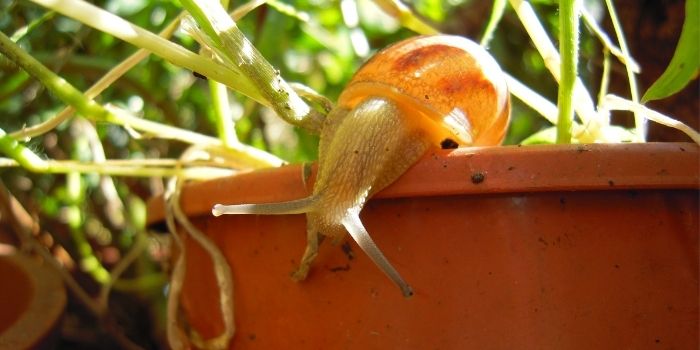
4- Gastropod-defying plants
Hosta is one such variety – though not all hostas can repel mollusks; hence you should pick a variety that can repel these organisms.
As per my experience, the best hostas to resist mollusks are those with thick leaves.
You can also use seaweed. The plant has a salty taste and thus doesn’t get liked by snails and slugs.
Get seaweed in your garden pond to keep gastropods away.
Some other plants, flowers, and herbs that repel and resist gastropods are lavender, sage, and rosemary.
You can also pick plants like geranium, fuchsia, lantana, California poppy, begonia, robe cup flower, impatiens, and nasturtium.
5- Repellents and barriers
Using proper barriers or repellents can be a good way to stop snails from coming into your home.
Some of the most effective ones include:
Copper can be used as a barrier for slugs and snails as metal gives gastropods electric shock.
In order to get rid of pests from copper, just tape the metal around the pot, tank, or garden or sprinkle fragments of copper all over the infested area.
Diatomaceous earth is another non-toxic thing that repels these tiny pests off your garden and home.
Available in powdered form, it has sharp edges to cut the body of gastropods. Just sprinkle it around the area they visit.
You can also use an electronic fence as a repellent to deal with slugs.
Electricity gives an unappealing sensation to these gastropods and turns them away. This sensation is safe for other animals.
Some other common repellents available in the house are sage, coffee, vinegar, ginger, or garlic.
Few of these household home remedies don’t just repel mollusks but also kill them.
Just put some of this stuff where they frequently visit. You can use them either in spray liquid form or in powder form.
Other barriers available as options are crushed eggshells, sandpaper, fur, ashes, etc.
They prove to be a barrier in the movement of these mollusks and keep them away from your veggies.
6- Pesticides and chemicals
Salt is the most common substance that you can use to kill snails and slugs in the garden.
You just need to sprinkle salt on them either directly or put it in the infected area. It will absorb the moisture from gastropods, dehydrate them, and then kill them instantly.
However, don’t use it around plants in your garden as they may be harmful to your veggies. Also, be careful if you have pets at home.
Garlic also has the ability to kill mollusks. All you need to do is mix it in some water to make a solution and sprinkle it on the infected places.
Iron phosphate is another common chemical to use when getting rid of mollusks.
The chemical is secure, and you can easily use it anywhere, even in your garden or aquarium.
Metaldehyde also works as a pesticide for gastropods.
It is also hazardous for your domestic animals, so it may not be the best option if you have pets at home.
If you want to use metaldehyde, then make sure it is kept away from people in your home, pets, and other domestic animals.
A few other chemicals that you can use as snail killers comprise Sevin dust, alum i.e. aluminum sulfate, bleach as well as potassium permanganate.
In order to use them, you should just spray them on the infected places.
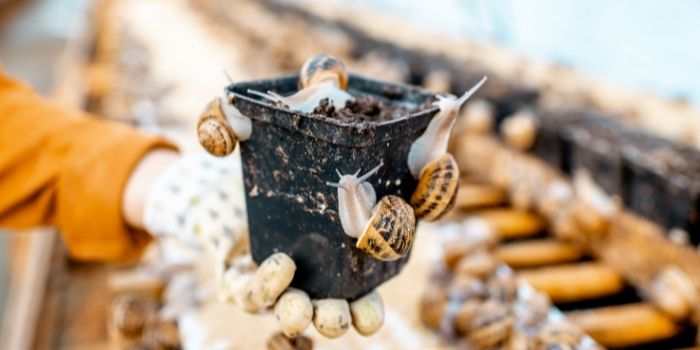
7- Pick and throw manually
If you are not scared, you can easily control and get rid of slugs and snails by just picking them with your hands, killing them, and throwing them in the bin.
Make sure you wear gloves or take the help of tweezers or chopsticks to handle this task in a simple and easy manner.
The most common time to do handpicking is during the morning or late evening.
If you do not want to kill or harm it, you can let it crawl onto your hand by itself.
Do not pick the snail with its shell as it may damage the shell or hurt them.
You can then carry and leave the snail outside your property in the wild or any other safe location.
IMO, this method can be very useful if you find a few of them walking on the walls, in your letterbox, or breeding in the fish tank or aquarium.
8- Alter your watering time
Another recommended way to get rid of these creatures is to change your watering time.
Rather than choosing common watering hours of the evening, you can do it in the morning.
It will make your garden less of a favorite habitat for these tiny pests as your garden will get completely dry by night.
9- Plow your garden to destroy eggs
You can also get rid of these creatures by tilling your garden more frequently.
Slugs and snails often lay their eggs on the surface of your garden soil; hence tilling and plowing your garden will kill them and their eggs.
It will not only act as a DIY slug repellent (by creating unfavorable conditions for them) but also will kill all the mollusk eggs.
Once the soil is tilled, you can put materials like wood chips and gravel to obstruct their movement.
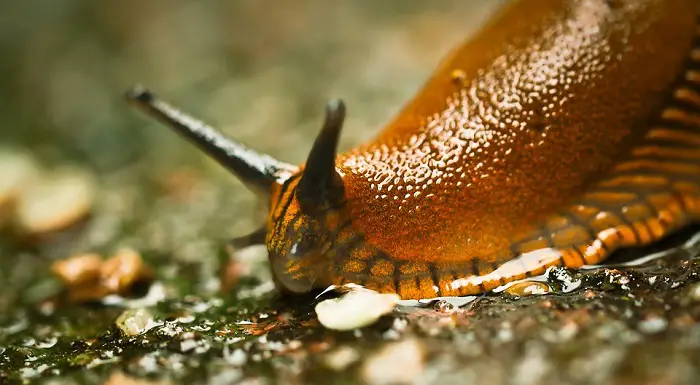
Are Slugs and Snails Aggressive?
Snail and slugs are usually non-aggressive and docile by nature. They like to be calm and move slowly.
And for these reasons, they are also a universal symbol of stability, patience, perseverance, and steadfastness,
They signify that what the conditions are in your life (whether slow or fast), you should keep on moving forward like these creatures.
Slug vs. Snail: Are They Same or Different?
Usually, one can differentiate between slugs and snails by the large external shell present on the back of the snails.
In simple terms, slugs are nothing else but snails without the shell.
Both belong to the category of gastropod mollusks, and unlike other gastropods, they are land-living creatures.
a) Anatomy
The major morphological difference between the two is the conspicuous shell of the snail.
Snails have a huge shell which they retract when feeling threatened.
Some snails also can close their shell after complete retraction.
Slugs don’t have the luxury of a moving house for self-defense. A lot of slugs feature a vestigial interior shell to store calcium.
Due to the lack of shell protection, their soft tissues may be susceptible to desiccation.
Apart from this huge external feature, both the mollusks have almost the same features, such as eyespots below sleek tentacles, mouths facing downward, singular, thick, muscular, flat bottom feet wet by mucus, and a covering of epithelial cilia.
b) Speed
Who can move faster, snail or slug?
There are tens of hundreds of snail and slug species, and they have different crawling speeds.
Usually, snails crawl at a speed of 1mm per sec or 0.002 mph.
There are some snail species that can move faster compared to slug species, and some snails that have no movement at all.
They stay still on the sea bed and eat plankton that may come in their way.
c) Movement
The movement of snails and slugs is quite interesting.
Several snails have contraction waves in their muscles which sweep their foot in front to produce a movement.
In reality, they only walk on just one foot.
d) Habitat
As there is no shell, a slug has the ability to steer and compress its body to hiding locations with very low space, for instance, loose branches of trees or below wooden ply and stone slabs.
It offers a perfect environment and survival benefit to them.
Snails have the advantage of retreating quickly in their shells for protection against their natural enemies.
Both the mollusks love hot and humid weather with a plethora of shade to hide.
e) Consumed as Food
As a similarity between these two animals, humans have been using slugs and snails as a rich source of food and are widely consumed.
In the previous time, they were used as a famine food, and in nations like Indonesia, Spain, and France, they are enjoyed as a gourmet dish.
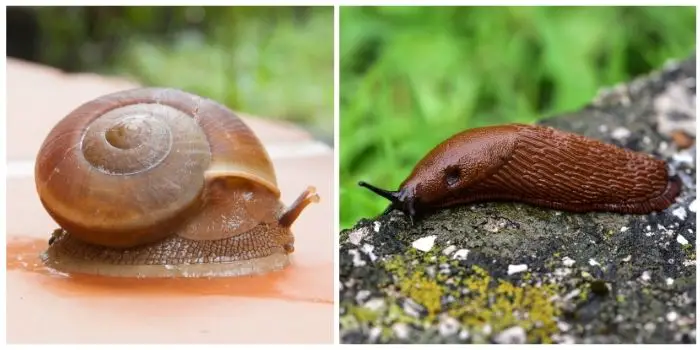
Why Should You Get Rid of Them from Your House?
Snails and Slugs are classified as molluscs (or mollusks) that are an important phylum of invertebrate animals.
As they don’t have any bones or a hard-shell-like snail, slugs can easily squeeze through small cracks.
They also can climb vertically or even upside-down.
Although not very dangerous (unless it’s a poisonous one), some of the reasons you should get rid of snails and slugs permanently include:
1- They house parasites
Some of the molluscs offer favorable conditions for harmful microorganisms and parasites.
For instance, parasites like mud gastropods and faucet host liver flukes.
Others may house parasitic worms, which may lead to bilharzia.
2- Can make your puppy sick
Although it’s not fatal to consume snails, it may prove to be dangerous if you or your pet eat them.
The infection caused is generally due to larvae of the parasites that they may carry.
You’re a dog; if you eat these snails, you can suffer from a major health issue like lungworm infestation that can cause severe bronchitis or other respiratory problems.
It’s, therefore, good to prevent your puppy from eating snails by always monitoring him when outside (especially in the garden where snails feed).
3- They aren’t attractive at all
Some of the snails and slugs are a pain to the eye.
They have a mucus-covered body and slimy trail, which is very unpleasing.
It is a primary reason why you should keep them out of your house and garden, especially if they are collecting in big numbers near your water tank, pond, or aquarium.
4- They spoil your crops and plants
Apart from being unattractive to the eye, the mollusks are categorized as pests.
They can destroy your plants (like hostas), hinder your crop yield largely, and can cause a lot of ornamental damage to your flowers.
They majorly feed on the leaves of the vegetables and fruits (like strawberries), so they pose a high threat to your leafy veggies in the garden.
5- They are highly destructive to areas near water
Slugs and nerite snails around the pond, tap water, or any water source can be harmful in a plethora of ways.
- First and foremost, if the mollusks are parasitic, they will be a threat to all the fishes in your pond or aquarium.
- Secondly, if you don’t control their population and allow them to reproduce, they will fight for resources.
- Thirdly, once they multiply, they will clog your pool, tank and filters, and pipelines.
With so many reasons to keep these mollusks out of your house, it is important to take steps to stop them in the first place.
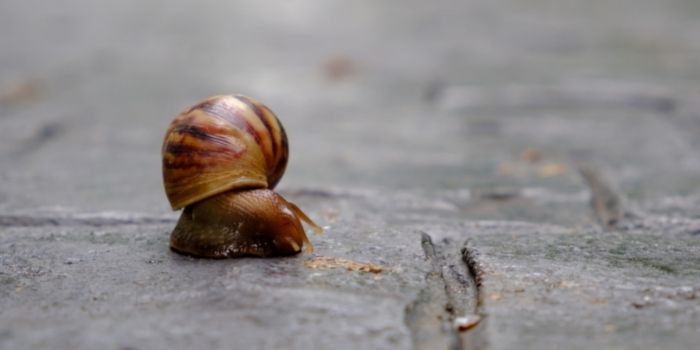
Other Related Questions:
What is the banana slug?
The banana slug is named so due to its resemblance to a banana.
You won’t believe it; it’s one of the slowest moving creatures on Earth. They usually move at a maximum speed of about six inches per minute.
And while being so slow, they can still creep inside your home and can stay there for long if not controlled.
Can a snail survive without its shell?
Just as we humans cannot live without bones, snails cannot live without their shells.
Snails are born with a shell that not only protects them from harsh weather but also for predators like amphibians, rodents, and birds.
No matter where they live (land, sea, or freshwater), all snails leave their shell and come out when they need to find food and reproduce.
Will the shell of snails grow back on its own?
The shell of the snail is physically attached to them, which grows along with them in a spiral shape.
Once completely damaged, the shell of the snails does not grow back.
They can, however, successfully repair or rebuild the shell if there are minor injuries made to the shell.
They do so by secreting the calcium and proteins through the tissues (snail’s mantle) that surround the organs.
The conclusion
Hope the above article clears the difference between slug vs. snail.
Also, you are now aware of why you should be stopping them from entering your house or backyard.
As a bottom line, if you find snails or slugs in your house, you should take proper action to get them removed – you never knew they could be poisonous and harmful.
You may use some of the tips mentioned in the above guide or research more based on your specific situation and place to get rid of these creatures.
Share the post "9 Ways to Stop Snails and Slugs from Entering Your House"

Welcome to ProShieldPest.com. I am Tina Jones. I have been working as a pest removal professional in Winslow, Arizona lately. At present, I love to spend my time with my family as a retiree.
Here I share all my knowledge and experiences to help people understand better how they can stop pests at their homes without actually killing them. Hopefully, the information you will find here will help in safeguarding your home! You can check more about me here.

